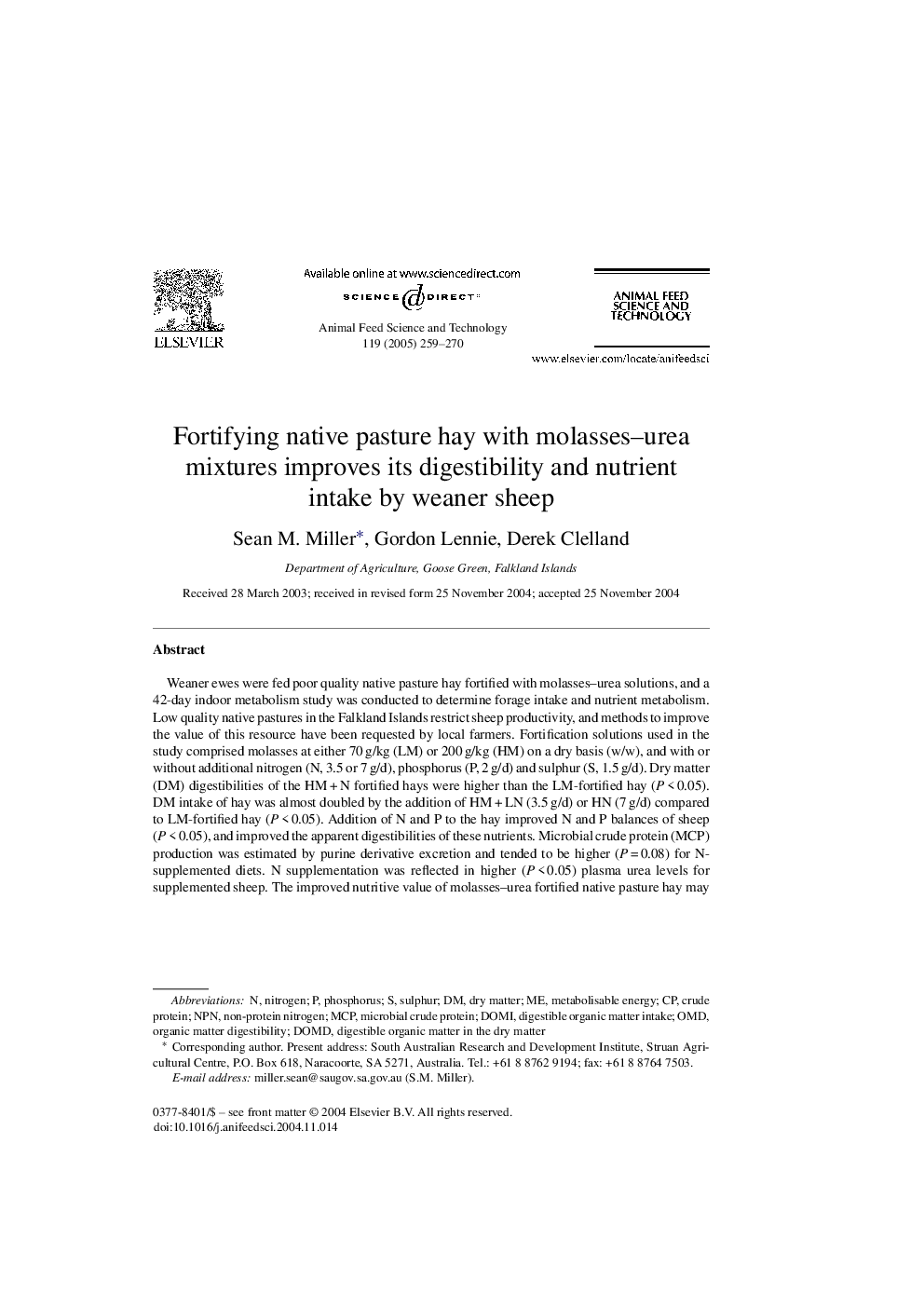| Article ID | Journal | Published Year | Pages | File Type |
|---|---|---|---|---|
| 8973762 | Animal Feed Science and Technology | 2005 | 12 Pages |
Abstract
Weaner ewes were fed poor quality native pasture hay fortified with molasses-urea solutions, and a 42-day indoor metabolism study was conducted to determine forage intake and nutrient metabolism. Low quality native pastures in the Falkland Islands restrict sheep productivity, and methods to improve the value of this resource have been requested by local farmers. Fortification solutions used in the study comprised molasses at either 70Â g/kg (LM) or 200Â g/kg (HM) on a dry basis (w/w), and with or without additional nitrogen (N, 3.5 or 7Â g/d), phosphorus (P, 2Â g/d) and sulphur (S, 1.5Â g/d). Dry matter (DM) digestibilities of the HMÂ +Â N fortified hays were higher than the LM-fortified hay (PÂ <Â 0.05). DM intake of hay was almost doubled by the addition of HMÂ +Â LN (3.5Â g/d) or HN (7Â g/d) compared to LM-fortified hay (PÂ <Â 0.05). Addition of N and P to the hay improved N and P balances of sheep (PÂ <Â 0.05), and improved the apparent digestibilities of these nutrients. Microbial crude protein (MCP) production was estimated by purine derivative excretion and tended to be higher (PÂ =Â 0.08) for N-supplemented diets. N supplementation was reflected in higher (PÂ <Â 0.05) plasma urea levels for supplemented sheep. The improved nutritive value of molasses-urea fortified native pasture hay may represent a practical opportunity for Falkland Islands' farmers to increase the productivity of local sheep.
Keywords
Related Topics
Life Sciences
Agricultural and Biological Sciences
Animal Science and Zoology
Authors
Sean M. Miller, Gordon Lennie, Derek Clelland,
